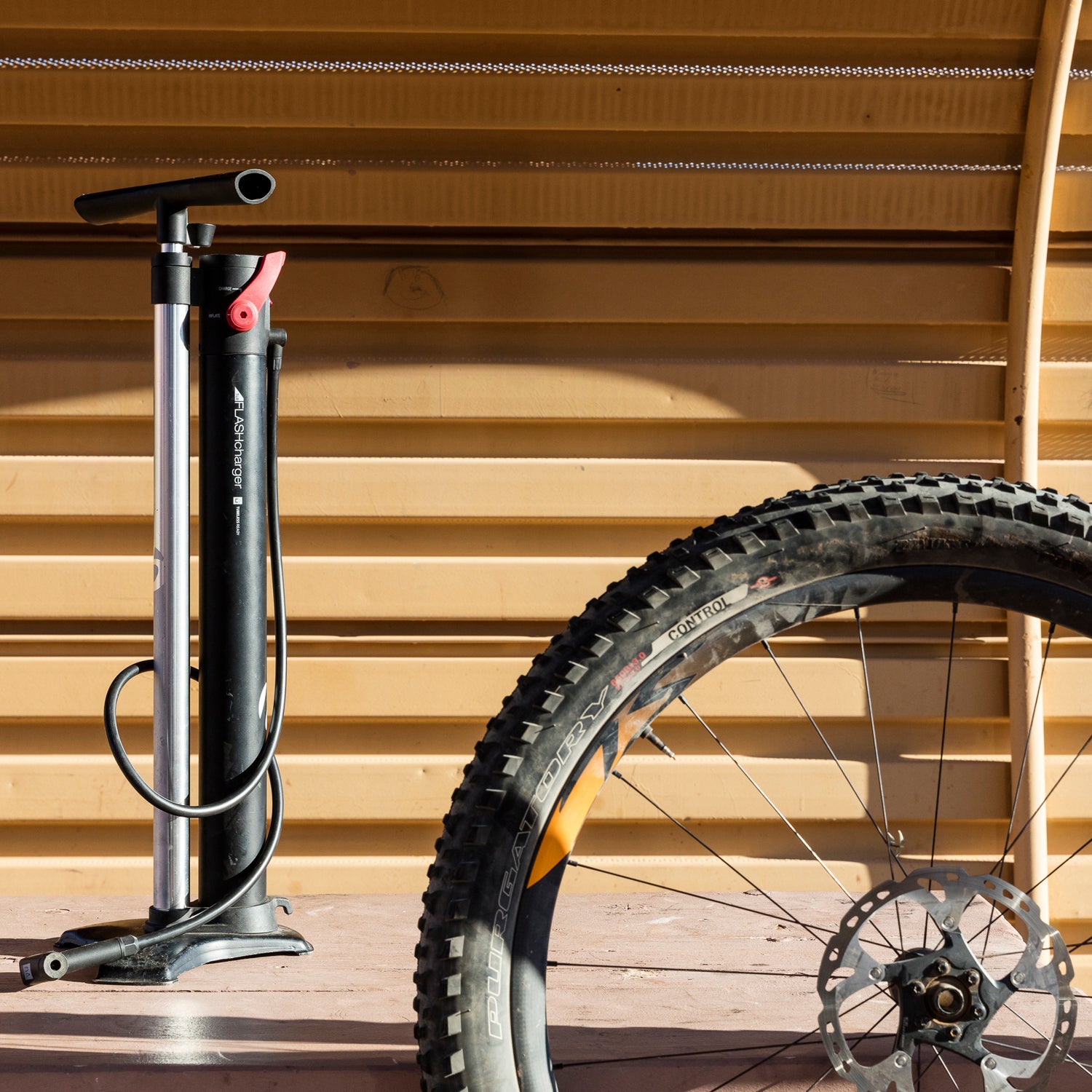The pump might be the most uninspiring piece of bike kit out there, outclassed in snooze factor perhaps only by tubes (which still exist, why?) and chamois butter. Sure, there are good pumps and bad ones. But basically, they all perform the thankless task of putting air in your tires. Case closed.
But then the. This pump is one of the smartest innovations for mountain bikers. And—this is no overstatement—it has made my life significantly better.
First, the Flash Charger functions fine as a normal pump: put the head on the valve stem (Presta or Schraeder), inflate 'till you get the desired pressure reading on the gauge, and off you go. There’s even a bleed valve for fine-tuning.
The real magic, however, is in how the Flash Charger handles tubeless setups. The trick lies in the Coke can-diameter size secondary shaft, which has a red alert-looking lever attached. Flipping that lever down (to “Charge” mode) isolates and closes the second chamber so you can build up a huge reservoir of high-pressure air. The gauge goes well past 160 PSI, and it takes around 50 pumps to get into that zone. Then, with the head already placed on the valve stem, a flick of the lever up unleashes a blast of air that seats a tubeless tire in a rim. (There’s a good video demonstration here.)
Since I got this pump nearly two years ago, it has never failed to set up any tubeless tire combo that I’ve tried. Given that I test in the neighborhood of 100 bikes a year, and given that the majority of mountain bikes come with tubes and need tubeless setups for our desert environment, that means I’ve used this pump successfully on an awful lot of tires. And I’m not just talking regular diameters, either: I’ve pumped up road tires, cross, plus-size, fatties, you name it.
It used to be that I traveled with both a compressor and a pump in case of tubeless failures. But these days the compressor stays at home because the Flash Charger easily pulls double duty. In fact, I rarely even use the compressor any more because the Flash Charger, without the mechanical blast, feels safer.
One caveat: because of all that volume, the attached gauge isn’t the most sensitive, so I’ve resorted to also packing a handheld digital pressure gauge. Then again, that’s not so much a criticism of the pump as a reflection of the changing bike market, as fat and plus-size tires demand lower pressures and very precise readings (say, 13.5 instead of 15) for the best ride.
And yes, it’s expensive at $120. But the lack of frustration with tubeless setups is worth well more than that. Plus, after two years, which would have seen the death of several lesser pumps, the Flash Charger still looks and works like new.


